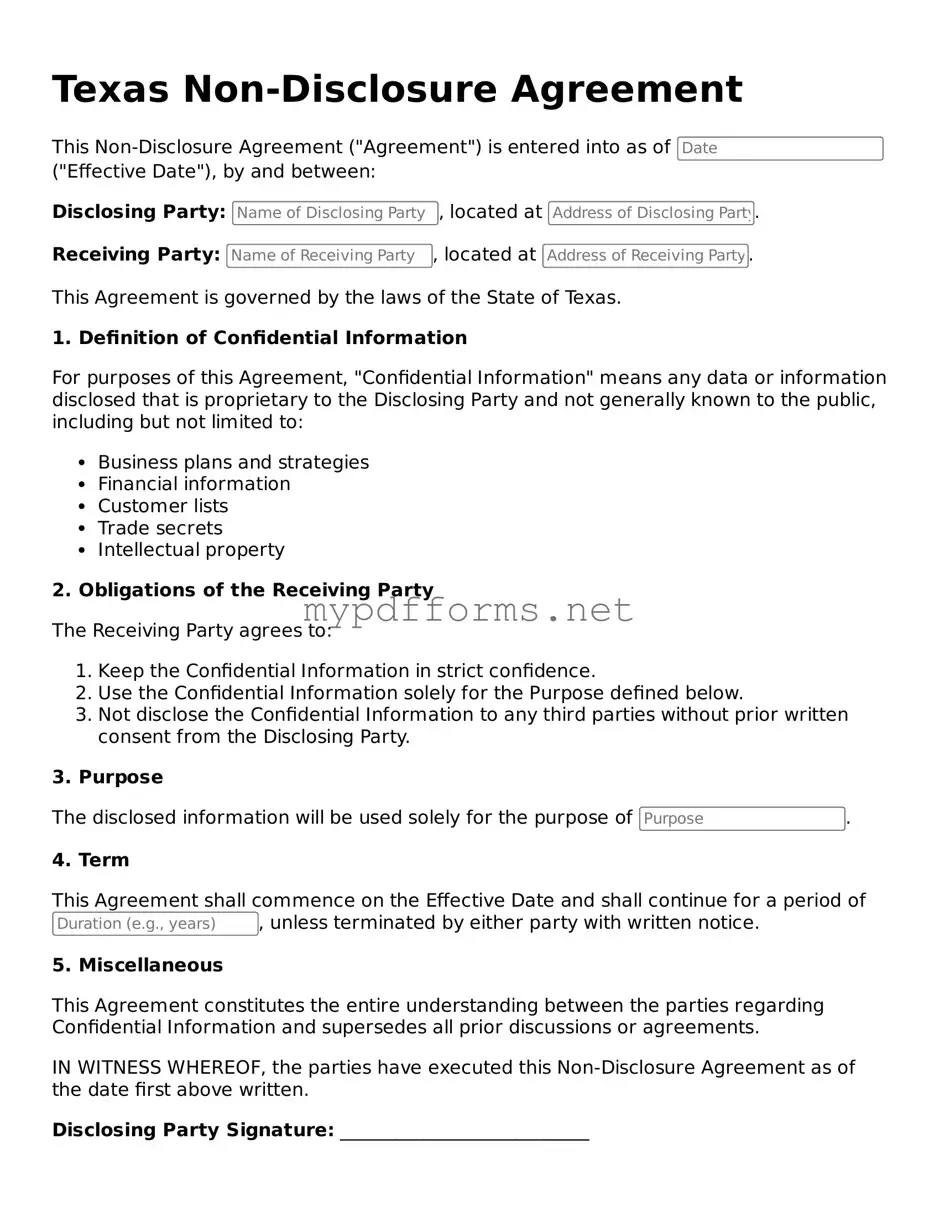A Non-Disclosure Agreement (NDA) is often compared to a Confidentiality Agreement. Both documents serve the primary purpose of protecting sensitive information shared between parties. While an NDA typically focuses on preventing the disclosure of proprietary information, a Confidentiality Agreement can cover a broader range of confidential information, including trade secrets, business strategies, and even personal data. The key difference lies in the terminology used and the specific context in which each document is employed, but the underlying goal remains the same: to safeguard information from unauthorized access or dissemination.
Another document similar to an NDA is the Non-Circumvention Agreement. This type of agreement is designed to prevent one party from bypassing the other to engage directly with a third party. For example, if a business introduces a supplier to a potential customer, a Non-Circumvention Agreement ensures that the supplier does not cut out the business from future dealings. While both agreements protect interests, the Non-Circumvention Agreement focuses more on the relationship between parties rather than just the information shared.
A Mutual Non-Disclosure Agreement is also closely related. Unlike a standard NDA, which may protect one party’s information, a Mutual NDA binds both parties to confidentiality. This is particularly useful in situations where both sides will share sensitive information. Each party agrees not to disclose the other's proprietary information, creating a balanced approach to confidentiality. This mutuality fosters trust and collaboration, especially in joint ventures or partnerships.
The Proprietary Information Agreement is another document that bears resemblance to an NDA. This agreement specifically outlines what constitutes proprietary information and the obligations of the receiving party regarding that information. While NDAs may be broader in scope, a Proprietary Information Agreement focuses on defining and protecting specific types of information deemed proprietary by the disclosing party. This clarity can help prevent disputes over what information is protected.
In some cases, a License Agreement can also share similarities with an NDA. While License Agreements primarily deal with the permission to use intellectual property, they often include confidentiality clauses to protect sensitive information related to that property. For instance, when licensing software, the agreement may stipulate that the licensee must keep certain technical details confidential. This dual focus on usage rights and confidentiality makes it a relevant comparison.
A Service Agreement can also resemble an NDA, particularly when it involves the sharing of sensitive information during the provision of services. In many service agreements, confidentiality clauses are included to ensure that service providers do not disclose client information. This overlap emphasizes the importance of protecting sensitive data in various business transactions, regardless of the primary purpose of the agreement.
In the realm of employment, an Employment Agreement often contains confidentiality provisions akin to those found in NDAs. Employees may have access to proprietary information and trade secrets, and these agreements typically require employees to maintain confidentiality even after their employment ends. This ensures that sensitive business information remains protected, similar to the objectives of a standard NDA.
A Teaming Agreement, used primarily in collaborative projects, can also be similar to an NDA. These agreements often include confidentiality clauses to protect the information shared between parties working together. The focus here is on collaboration while safeguarding sensitive information from being disclosed to competitors or the public. This shared commitment to confidentiality is crucial for successful partnerships.
In the realm of legal documentation, understanding the nuances of agreements like the Hold Harmless Agreement is essential. A well-drafted document can be a powerful tool in mitigating risks associated with various activities. For those in Illinois, using the Illinois Forms can facilitate the careful preparation of such agreements, ensuring that all stipulations are clear and boundaries are well-defined. This clarity fosters trust and security, which are paramount in any business transaction.
Lastly, a Settlement Agreement may include confidentiality provisions that resemble those in NDAs. When parties reach a settlement, they often agree not to disclose the terms or details of the agreement to outside parties. This confidentiality helps protect the interests of both parties and can be vital for maintaining privacy and minimizing reputational harm. Although the primary purpose of a Settlement Agreement is to resolve disputes, the confidentiality aspect aligns closely with the principles of an NDA.
